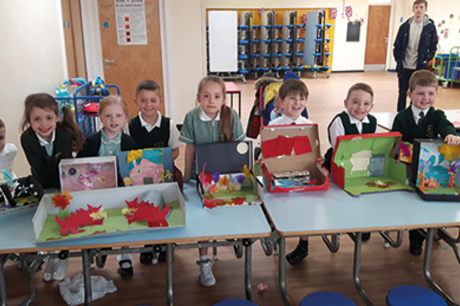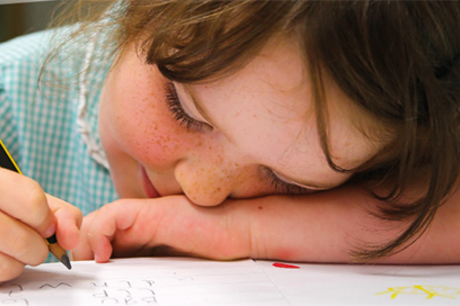
Schools and other settings have been receiving the Early Years Pupil Premium (EYPP) since 2015, and while many are using it to great effect, others are still struggling to ensure that the funding benefits eligible children, as was revealed in the recent Ofsted publication Unknown children – destined for disadvantage?
Ofsted found that in just under half of the 43 schools and settings it visited to compile the report, leaders and staff had often not identified the children who were entitled to EYPP. The report concludes, ‘More needs to be done to ensure that additional funding has sufficient impact’, and the inspectorate is calling for a requirement on schools and other settings to publish information on their websites about the impact of the EYPP.
Meanwhile, the Social Mobility Commission has called for settings that cannot demonstrate how this money is benefiting eligible children to be given an ‘inadequate’ rating from Ofsted. (It also called for the funding to be doubled from £302.10 per year to £604.20.)
Many schools have been using the funding to target children with speech and language difficulties, train staff to deliver high-impact interventions, or provide disadvantaged children with experiences they do not get at home. But with numbers of eligible children varying enormously between, and within, local authorities, effective strategies for using the funding have had to be tailored to local circumstances and the particular needs of eligible pupils within a given school (see below).

CASE STUDY: LIVERPOOL
In Liverpool, with its relatively high levels of deprivation, a number of schools have used their EYPP to continue a City Council-funded literacy project involving artist Anni McTavish and Liverpool Tate museum.
‘Funding for the Building a Bridge of Books project ran out, but it had been so successful,’ says Lisa Dorrity, senior officer at School Improvement Liverpool. ‘Schools wanted to show the impact of the EYPP, which is a smaller pot than the pupil premium, and this project seemed ideal.’
Ten schools were invited to send a practitioner to a training day led by artist Denise Wright and the School Improvement Liverpool team. They learned how to run workshops for children on making books, in a way that brought together expressive arts and design, and literacy.
The project aimed to strengthen links between the home and settings, as well as foster a love of books in young children.
The schools then targeted a small group of families that they felt would benefit, and parents and children attended six workshops, one of which was led by Ms Wright. More than 100 families have now taken part in the programme.
‘We had sessions on making different types of books – concertina books, books with graduated pages such as in The Very Hungry Caterpillar, a very simple book which was bound together with a stick, and a storybox,’ explains Cathy Hyland, assistant head teacher at St John’s Catholic Primary School.
‘The first books the parents and children made were the concertina books, which were the most difficult to make, but once completed, the parents felt confident to make anything. They took these books home to finish with their children and brought them back the next week to show how they had completed them. The children’s pride in their achievement was evident and they were so eager to show off their book and talk us through it.’
Book of sounds
During one session the group worked on a book of sounds, after going on a ‘sound walk’. ‘This was quite interesting, as the parents took time to listen with their children to the very different sounds inside and outside school, and it produced a lot of talk back in the classroom,’ Ms Hyland says.
‘We also made a nursery rhyme book, asking the parents to share their favourite nursery rhymes and maybe to learn some new ones. One of our parents is Polish and she and her daughter shared some Polish rhymes with us. We talked of the importance of rhymes and their part in listening and learning to read, quite apart from being enjoyable things to share with the children.’
In terms of outcomes, Ms Hyland says the children’s confidence and engagement with books has noticeably improved. ‘In particular one little girl who has English as an additional language is much more confident with talking – she has brought the books she made into nursery and talked to other children about them.’
Parents are also more engaged with the setting. ‘Two of them now volunteer as parent helpers, which they would not have felt confident enough to do before.’
Engaging parents
Anita Coakley is nursery class teacher at Holy Trinity Primary School, which also took part in the project. ‘Our aim was to establish really good relationships with the parents, and to get them involved in their children’s education,’ she says. ‘I adapted the model slightly as I found it beneficial to have some time with the parents prior to the children coming in. Some of them were a bit anxious that I was going to be judging them.’ One mother rarely attended parents’ evenings, but has attended every one since taking part in the workshop.
One of the challenges of the programme was getting parents to engage at all. ‘We did invite some parents who didn’t come, but the parents who did attend have spoken so highly of it that we are now running it for a second time,’ says Ms Coakley. ‘This is a close-knit community and the first set of parents are now encouraging others to come.’
The training was also seen as relatively expensive, but once a member of staff has been trained, they can deliver the programme to different cohorts, freeing up the next lot of EYPP money for other uses.
Making it count
Liverpool City Council has now developed a new programme, building on the success of Building a Bridge of Books. In a similar model, schools have invested EYPP money in training a member of staff to deliver the Make it Count numeracy workshops, which also aim to combine numeracy and creative work– for example, by making kites.
Holy Trinity is also taking part in this scheme and has just run its first session. ‘I have talked to parents about the things they can do when they go out with their children around counting things, recognising numbers,’ says Ms Coakley.
Ms Dorrity adds, ‘Parents often say they can’t do mathematics, but it was our aim to make mathematical links to creative ideas so that parents and children have fun with maths.’

CASE STUDY: MEADLANDS PRIMARY SCHOOL
As a small school, within the largely affluent London Borough of Richmond upon Thames, Meadlands Primary School does not have a lot of EYPP money to play with, so staff have had to think carefully about how it would be used. ‘We have regular pupil progress meetings and use these to identify gaps where we need to put in more support,’ says Claire Davies, assistant head teacher and Senco at the school. ‘We picked up managing feelings and behaviour as one area we needed to develop, and speech and language as another.’
The school has been able to use EYPP money to extend pupil premium-funded interventions in the main school to the nursery children. ‘We tailor provision to the eligible children,’ says Ms Davies. She plans, for example, to roll out the school’s successful use of ‘Lego therapy’ to the younger children.
‘We have three children in a group, and they have different roles,’ explains Ms Davies. ‘One will have the instructions, and tell the other children what kind of brick they need to get next and what they need to do with it. It is all about extending vocabulary, taking turns, managing behaviour as well as working on speech and language, and it works particularly well with boys.’
EYPP funding has also been used to extend the support provided by the emotional literacy support assistant (ELSA) and speech and language therapist, who are already active in the main school. ELSAs are teaching assistants trained to provide emotional and social skills support to children, one-to-one or in small groups, about issues such as bereavement and anxiety.
‘As well as working directly with the children, the speech and language therapist has carried out observations to see if we can develop the nursery environment to make it a model for speech and language development,’ says Ms Davies.
In terms of impact, all eligible early years children attained a Good Level of Development (GLD) in the first year of the EYPP funding, and last year, three out of five children achieved a GLD. ‘We certainly feel it has had an impact,’ says Ms Davies. ‘It makes you reflect on your practice, and opens us up to new things that we might not have considered if the funding had not been there.’
MORE INFORMATION









